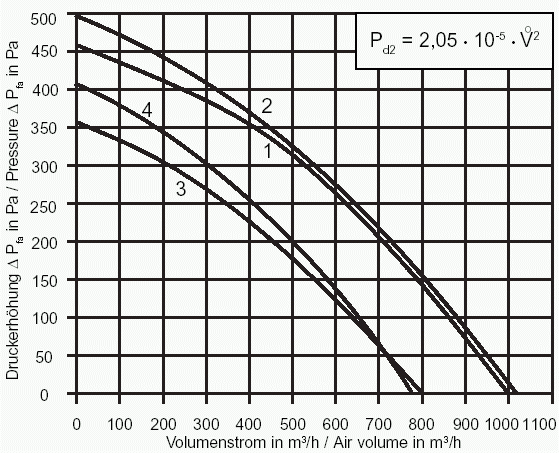
|
|
Table of contents
Why you need oneA laminar flow hood is a piece of equipment which makes sterile working procedures in mushroom cultivation easier and reliable. A flow hood consists of a coarse pre-filter, a blower and a very fine filter (the so called HEPA (High Efficiency Particulate Air) filter which filters particles from the air to a high degree. This makes the air coming out of the HEPA filter nearly sterile which allows doing transfers in this stream of sterile air without worrying about contaminants entering from the air and contaminating the cultures. Getting startedYou should begin the construction by selecting a HEPA filter and a blower. The HEPA filter size depends on how big you want to have your working space. The smallest filter size you can reasonably use (for home scale cultivation) is 1ft x 1ft, better though 1ft x 2ft or 2ft x 2ft if you are going to inoculate filter bags. Sources for HEPA filtersEbay offersWorldwide sourceswww.aafeurope.com
www.camfil.com
Country specific sourcesAustralia | Austria | Canada | France | Germany | India | Israel | Italy | Netherlands | Norway | Russia | Slovenia | Sweden | Switzerland | United Kingdom | USA | Turkey | USA | Yugoslavia AustraliaAustriawww.czech.at
CanadaFrancewww.aaf-sa.fr
Germanywww.aaf-lufttechnik.de
Indiawww.aeromechindia.com
IsraelItalywww.altifilter.com
http://www.google.it/search?q=filtri+assoluti NetherlandsNorwayRussiaSloveniawww.ecotip.si
SwedenSwitzerlandwww.logicair.ch
Turkeywww.aaf.com.tr
United Kingdom (UK)USAwww.aafilters.com
YugoslaviaMatch a blower to the filterOnce you decided on the size of the HEPA filter, you have to match a suitable blower to this particular filter. This is a very important step, so make sure to study the directions thoroughly. Every filter has a "resistance" when air blows through it at a certain speed, this resistance is called the "static pressure". Press your hand against your mouth. Now try to blow through it. Dependant on how firm you press it against your mouth, you will have some difficulties blowing air out and you will feel some resistance, this is the static pressure. Every filter has a different static pressure at the working point. The working point is where the amount of the air flowing through the filter is sufficient to meet the requirement of the laminar flow. The static pressure is expressed in inch of water column in the English units, a typical value would be 1", the SI unit for pressure is Pa(Pascal). 1" water column is around 250 Pa. Each filter has a data sheet (consult the manufacturer if this is not the case with your filter) where the static pressure at the working point is entered. Before the air enters the blower it is usually pre-filtered by a furnace filter around 1"(2.5cm) thick placed in front of the blower to protect it and the HEPA filter from big particles like dust and hairs. It can be assumed that the static pressure for this prefilter at the working point is around 0.2"(50 Pa) According to Stamets (Paul Stamets and J.S.Chilton: The Mushroom Cultivator p. 347 ff) the air speed of the air flowing from the filter surface should be (at least) 100 feet per minute(fpm).(around 30 meter per minute or 0.5 meter per second). Determining the correct blower for a filter consists of several steps: 1. Find out the area of your filter by multiplying the width and the hight in feet (for instance the smallest reasonably usable filter would be 2ft x 1ft) 2ft x 1ft = 2 ft2
2. Multiply the required air speed(the one Stamets specifies, 100 ft/min) with the area of your filter 100 ft/min x 2 ft2 = 200 ft3/min
So 200 ft3/min(= cfm = "cubic feet per minute") is the amount of air your blower must deliver at the sum of the STATIC PRESSURE of the HEPA filter + prefilter. NOTE: 1 cfm= 1.7m3/h So if you use the above filter with 1"(250Pa) static pressure and a furnace prefilter with a static pressure of 0.2"(50Pa) your blower must deliver 200 cfm(340m3/h) of air at a static pressure of 1.2"(300Pa). Finding the correct blowerEach blower has a data sheet (consult the manufacturer if this is not the case with your blower) where the correlation between the volumetric flow and the static pressure is represented by a graph or table. Here is such a set of curves for 4 blowers(numbered 1-4).
 Sometimes these data are presented in form of a table.  By now you know how much your blower must deliver and at which static pressure. In our example it was 340m3/h at 300Pa.
In this case we go for the smaller(and cheaper) blower(Nr.4) instead of the much bigger one(Nr.1, which delivers 530m3/h at 300Pa), despite the fact that it's generally recommended to take a stronger one. NOTE: This chart is only an example for a set of 4 particular blowers. The curves of the blowers available to you may look a bit different, but similar.
The design in this pictorial uses an in-line centrifugal fan, another good option (actually the one most commonly used for flow hoods) is a squirrel cage blower (also called shaded pole blower). You can get many blowers at ebay.com, often at much cheaper prices than if you bought them directly. Ebay offersIt is important to contact the seller in advance and inquire about the exact characteristics of the blower beforehand, so you don't end up with a too weak blower. When in doubt, head for the more powerful blower, you can still regulate it down if necessary with a variable speed controller/regulator: Ebay offersConstruction of the hood
A link to a very good tutorial on flowhood construction applying a different design:
1 vistors are currently browsing this page, 4 total. |